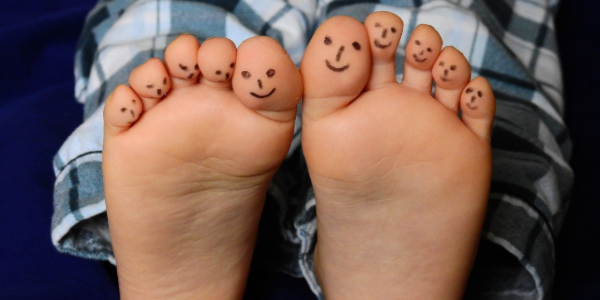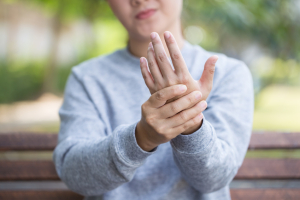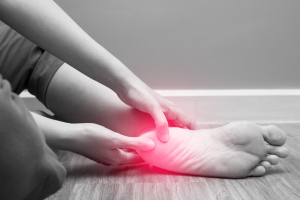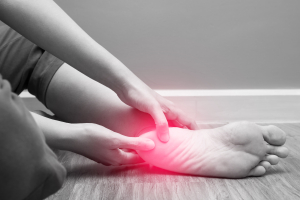
5 Types of Chronic Foot Pain

Pain is the body's way of signaling a possible injury. For example, a paper cut may result in the sensation of acute pain for a couple of minutes. Chronic pain, on the other hand, continues or recurs, often for long periods of time. It's not uncommon for chronic pain to affect every part of daily life. For example, over 264 million work days are lost every year due to back pain alone. While some forms of chronic pain can be traced to a particular cause, such as chronic pain arising from arthritis, other forms of chronic pain have no apparent cause.
Foot pain can arise for a variety of reasons, including (but not limited to):
- Inflammation in the muscles, nerves, or other tissues in the foot
- Bone spurs
- Bruises
- Overuse
- Arthritis
- Sprains
- Neuropathy
- Tendonitis
Foot pain can occur in nearly all parts of the foot, including the heel, arch, ball, and toes. While many of the underlying causes of foot pain can heal with rest, others can be chronic. Here are five examples of chronic foot pain and symptoms:
Arthritis
Arthritis, also called osteoarthritis, results from injury or wear in a joint that causes deterioration of the joint. While most people often associate arthritis with old age, people of any age can show signs of osteoarthritis. The symptoms of osteoarthritis include inflammation, pain, and deformity in the joints of the toes and foot. There is no cure for osteoarthritis, so treatment typically focuses on reducing inflammation and pain. For example, some people with osteoarthritis in their feet often find some form of relief by using foot cream for pain and arthritis pain relief cream.
Neuropathy
Peripheral neuropathy is the name for nerve damage in the feet and hands. Peripheral neuropathy can arise from many causes, including diabetes, shingles, autoimmune diseases, and exposure to toxins. Symptoms of peripheral neuropathy include burning, tingling, numbness, or pain in the feet and hands.
While some forms of neuropathy can be treated, such as those caused by nutritional deficiencies, other forms of neuropathy cannot be treated. In those cases, treatment usually includes reducing the pain and nerve sensations associated with the neuropathy. Some people use foot cream for pain and nerve pain relief cream to reduce their symptoms from neuropathy.
Bunions
Bunions are a deformation of the first joint of the big toe, typically caused by overuse, foot or toe injuries, or ill-fitting shoes. The symptoms of bunions are a bulge at the base of the big toe and chronic or intermittent pain. While surgery may be an option in extreme cases, most bunions are treated by reducing or relieving the pain associated with them. Foot cream for pain and joint pain relief cream may provide some relief from the symptoms of bunions.
Hammertoes
Hammertoes are similar to bunions in that they are both characterized by a deformation of a toe joint. In the case of hammertoe, the second, third, or fourth toe is bent due to damage to, or overuse of, the muscles, tendons, and ligaments in the foot and toe. Hammertoe can result in significant pain when moving or straightening the toe. Like bunions, hammertoe is caused by overuse, foot or toe injuries, or ill-fitting shoes. Again, surgery may be an option in extreme cases, but most cases of hammertoe focus on relieving the pain associated with hammertoe with alternative options like foot cream for pain and joint pain relief cream.
Fallen Arches
Fallen arches can result from a deformity in the feet that was present at birth or can occur later in life. In either case, the arch that is normally formed by tendons attached to the heel and foot bones is either flat or smaller than expected. Some cases of fallen arches or flat feet are associated with no symptoms. Other cases of fallen arches or flat feet are associated with aches and pain in the feet, tired feet, and swelling of the feet. Fallen arches can be treated through surgery in extreme cases, but in most cases, foot cream for pain relief, inflammation relief, or pain relieving cream may be used to relieve the symptoms of fallen arches.
In sum, foot pain can be caused by a variety of conditions including deformities resulting from arthritis, bunions, hammertoe, or fallen arches, or even nerve damage in the form of peripheral neuropathy. For more information about these conditions -- and how foot cream for pain can help -- contact MagniLife today.






